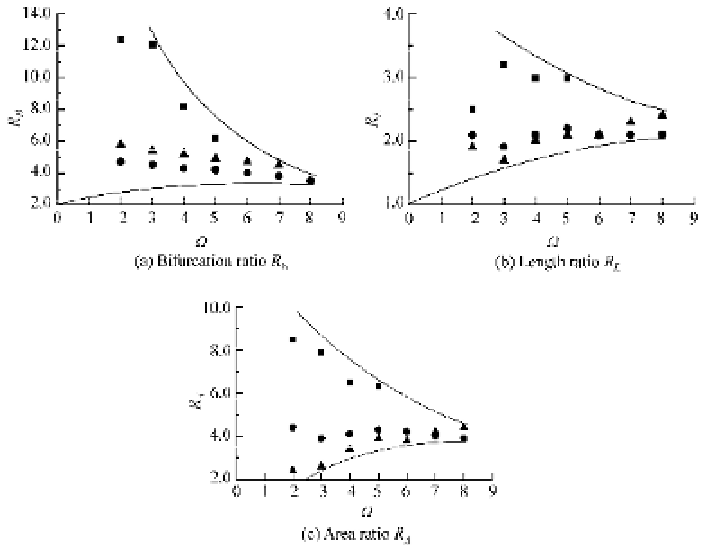Environmental Engineering Reference
In-Depth Information
Fig. 11.23
Horton ratios of the three types of network as functions of the stream order of the networks (
Ƶ
plume
networks;
Ʒ
vein networks;
ƽ
dentritic networks)
The three network patterns typically drain different in basin shapes. As shown in Fig. 11.24 the drainage
area increases with stream length for the three types of networks. For the same channel length, the dentritic
network has the largest drainage area, roughly following a square law with increasing stream length. The
plume network has the smallest drainage area, which increases almost linearly with the stream length.
Vein network is between the two. In general, plume networks develop in areas with annual precipitation
around 200 mm, such as the north and west parts of the Loess Plateau in China. Dentritic networks develop
in wet areas with annual precipitation higher than 800 mm. The bed sediment is non-uniform consisting
of gravel, cobbles and boulders, sand, and silt. Vein networks develop in areas with precipitation between
that for the plume and dentritic networks.
Fig. 11.24
Drainage area as a function of stream length for the three networks: (
Ƶ
plume networks;
Ʒ
vein networks
ƽ
dentritic networks)
Among Horton's three ratios the bifurcation ratio is the most essential and most important. For dentritic
networks of different orders, the bifurcation ratio is about 4. This is an important topological characteristic
of stream networks. The 4-bifurcation law may be used to identify river networks. Figure 11.25(a) shows





Search WWH ::

Custom Search